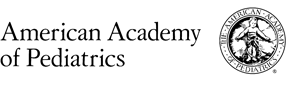
Hives are another common childhood skin condition. Caused by an allergic reaction, hives may appear all over the body or just in one region, such as the face. The location may change, with the hives disappearing in one area of the body and appearing in another, often in a matter of hours. If your child has an itchy rash that consists of raised red bumpy areas with pale centers, and no scales or dry skin over the lesions, he probably has hives (welts).
Since hives are an allergic reaction, they are usually triggered by something your child has touched, eaten or breathed in. Some common triggers of hives include:
- Foods (berries, cheese, nuts, eggs, milk, sesame oils, shellfish)
- Drugs, either over-the-counter or prescribed (penicillin and aspirin are two frequent culprits)
- Pollen from trees, grass, ferns
- Plants
- Response to infection (so-called infectious hives)
- Cold water
- Bites or stings from bees or other insects
Since there are so many different types of triggers, it is often difficult to pinpoint the exact cause of hives. However, if the rash is confined to a small area of skin, it was probably caused by something your child touched. (Plants and soaps are frequent culprits.) But if it spreads all over his body, something he ate or inhaled is most likely to blame.
Frequently, there’s a pattern to the appearance of the hives that provides a clue to the allergy. For example, does it usually happen after meals? Does it seem to occur more during certain seasons or when traveling to particular places? If you discover a specific pattern, alter the routine to see if your child improves. You will need to consider every food your child eats, even those that he has eaten without difficulty in the past. Sometimes, hives will occur if your child eats an unusually large amount of a food to which he is only mildly allergic.
If your child does experience an outbreak of hives, an oral antihistamine will relieve the itching. Many of antihistamines can be obtained without a prescription, but you should ask your doctor to recommend one. You may need to use this type of medication for one to three days, and give it as often as every four to six hours. Applying cool compresses to the area of itching and swelling also may help.
Still other treatments may be necessary if internal parts of the body are involved in the allergic reaction as well. If your child is wheezing or having trouble swallowing, emergency treatment should be sought. The doctor usually will prescribe a more effective antihistamine, and may even give an injection of Adrenalin to stop the allergic response. If the allergy causing the hives also results in severe breathing difficulties, your pediatrician will help you obtain a special emergency-care kit for possible use with such reactions in the future.
Another type of itchy skin rash is caused by contact with poison ivy, poison oak and poison sumac. An allergic reaction to the oil in these plants produces the rash. The rash occurs from several hours to three days after contact with the plant and begins in the form of blisters, which are accompanied by severe itching.
Contrary to popular belief, it is not the fluid in the blisters that causes the rash to spread. That occurs when small amounts of oil remain under your child’s fingernails or on his clothing or on your pet’s fur and are then carried to other parts of his body. The rash will not spread to another person unless the oil that remains also comes in contact with that person’s skin.
Poison ivy grows as a three-leafed green weed with a red stem at the center. It grows in vinelike form in all parts of the country except the Southwest. Poison sumac is a shrub, not a vine, and has seven to 13 leaves arranged in pairs along a central stem. Not nearly as abundant as poison ivy, it grows primarily in the swampy areas of the Mississippi River region. Poison oak grows as a shrub, and it is primarily seen on the West Coast. All three plants produce similar skin reactions.
Treating reactions to poison ivy is a straightforward matter.
- Prevention is the best approach. Know what the plant looks like and teach your children to avoid it.
- If there is contact, wash all clothes in soap and water. Also, wash the area of the skin that was exposed with soap and water for at least 10 minutes after the plant or the oil has been touched.
- If the eruption is mild, apply a calamine lotion preparation three or four times a day to cut down on the itching. Avoid those preparations that have anesthetics or antihistamines in them, as they can often cause allergic eruptions themselves.
- Topical 1 percent hydrocortisone creams can be applied to decrease the inflammation.
- If the rash is severe on the face, or on extensive parts of the body, your pediatrician may need to place the child on oral steroids. These will need to be given for about 10 days, with the dose tapering in a specific schedule determined by your pediatrician. This treatment should be reserved for the most severe cases.
The pediatrician should be called if you notice any of the following:
- Severe eruption not responsive to the previously described home methods
- Any evidence of infection, such as blisters, redness or oozing
- Any new eruption or rash
- Severe poison ivy on the face
- Fever
from Caring for Your Baby and Young Child: Birth to Age 5, Bantam 1998 © Copyright 2000 American Academy of Pediatrics
